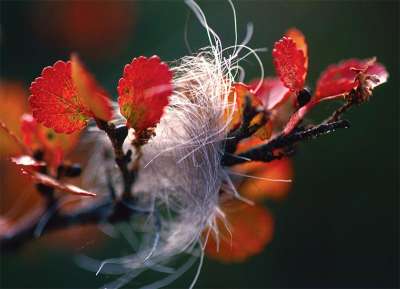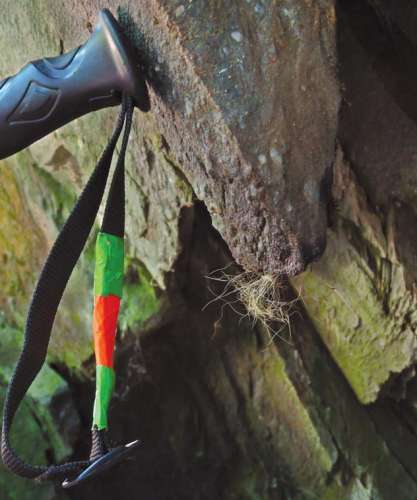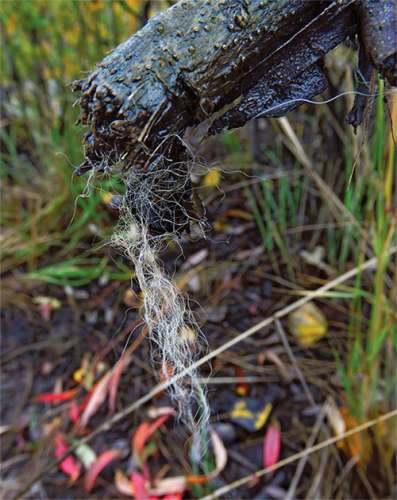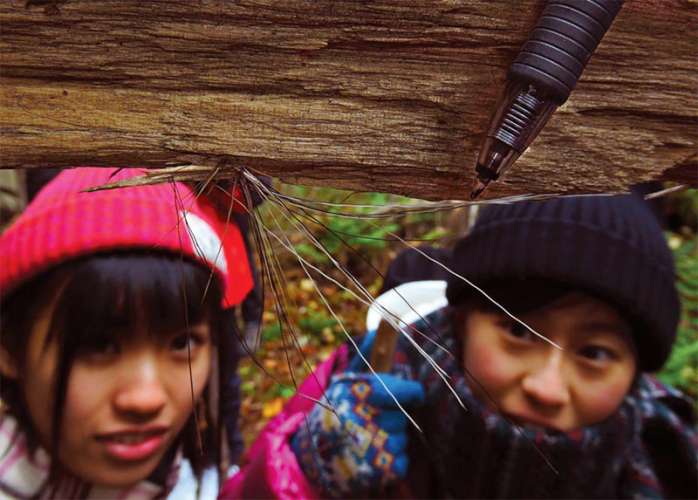The ability to detect the passage of the most elusive wild animals without relying on fresh tracks is a skill that amazes novices. They sometimes assume that such a tracker, like a legendary Native American scout, must possess magical powers. What’s really needed, though, is keen observation of specific wildlife habitat features, an understanding of animal behavior, and the experience to anticipate where animal sign will most likely be found. Consider the wisdom of my favorite maxim: “half of tracking is knowing where to look; the other half is looking.”
Though subtle at times, hair is often found where animals rubbed their bodies or passed through. This time of year, a good place to look for hair is on buck rubs, as well as tree limbs overhanging their scrapes. When a buck rubs a tree or branch with his forehead, he is depositing complex scent messages that speak social and sexual volumes to other deer – researchers have identified 57 different volatile compounds associated with mature bucks’ forehead hair. Not even the most capable human tracker can decipher their meanings.
In looking for animal hair, examine closely any broken snag or branch protruding into or overhanging a game trail. Depending on the size of the trail’s opening and the size of the obstruction, hairs may be snagged and left behind as all sorts of animals – from deer mice to moose – squeeze through.
Consider the story the hair tells. The broken aspen stub pictured here poked well into a game trail traveled by an Ontario timber wolf. The hairs weren’t left recently, though. Fall foliage colors tell that it’s autumn, but the hairs would have been left the prior spring when the wolf was shedding last winter’s coat.
One of my favorite places to look for hair is in a place I call “Catcut.” It’s a specific habitat feature found along a research transect that I have studied for 40 years. A pointed rock outcrop here is a favorite facial-marking signpost where I have discovered bobcat hairs. Head-bumping and cheek- and neck-rubbing are performed upon this outcrop, and chemical scent communications are thereby posted for other bobcats to encounter and interpret. (It all gives new meaning to the word “Facebook.”) The animals regularly spray urine, deposit feces, and make scrapes in this 4x10-foot sheltered environment. Trackers should look for these microhabitats and then for the sign that can be found there. Key places to look for bobcat sign are overhanging ledge outcrops that shelter the leaves, soil, and marking environment from the elements, thus prolonging the delivery of scent molecules. If game trails intersect near these sites, they become all the more attractive to bobcats.





